Any parent wants their child to be in the safest place in the car.
Until recently, the place behind the driver’s seat was considered such, based on the fact that in an emergency, the driver, subconsciously guided by instinct, turns the steering wheel to the left, protecting himself from impact. In addition, given the statistics of road accidents with the sad leadership of frontal collisions, many automakers design cars in such a way that the left half of the car is more resistant to deformation during frontal collisions than the right (for the same reason, cars are crash tested"b but" precisely the left half).
An alternative opinion is based on counterarguments from the same statistics: since the cause of the overwhelming number of head-on collisions (especially in Russia) is driving into the oncoming lane and the car takes the main impact from the driver’s side, therefore the most safe place located behind the front passenger seat, which receives the least damage. However, neither version is supported by any serious research in Russia.
In 2006, the University at Buffalo conducted an analysis of traffic accident statistics for three years from 2000 to 2003. Scientists have concluded that the safest place in a car is in the middle of the back seat. The numbers are as follows: rear seats are on average 73% safer than front seats, and rear middle seats are at least 16% safer than side seats. One of the reasons for the safety of the middle rear seat is that it has much more space than other seats, which is not “squashed” in a collision, including a side one. However, here it is necessary to take into account the fact that in America the median strips on most highways are equipped with concrete barriers, therefore there are much fewer head-on collisions there than in Russia, but on the contrary, there are more side collisions due to the specific rules for driving at traffic lights (therefore, American-made cars are less resistant to deformation in frontal collisions, but much more protected on the sides).
The child car seat is conveniently installed in the rear seats, which are the so-called “sofa". And the most suitable are the rear seats, consisting of three separate full-size chairs. Therefore, it is recommended to install child car seats in the middle seat of the rear row of seats in five-seater cars or in the middle seat of the middle row of seats in seven-seater cars.
Unfortunately, many car models are not the most comfortable for installation. child car seat middle rear seat. In models of class C and above, a folding armrest is usually built into the back of the middle seat. In many sedans, hatchbacks and even station wagons, the rear seats fold in a 60:40 ratio, leaving only 20% of the space for the middle seat.
Problems often arise with installing several child car seats in large families. Of course, the ability to install multiple child seats depends on the size of the car itself. For a family with three children, a C-class car will already be cramped even without child seats, especially if we are talking about domestically produced cars. If there are four or five children in the family, then it is optimal to purchase a seven-seater car with three rows of seats or travel in two cars. Well, the most comfortable car for a large family will, of course, be a minivan.
The natural desire of every family motorist is to place the child in the car in such a way as to ensure maximum safety for him. Until recently, it was unconditionally believed that the safest place in a car was the seat located behind the driver. This was justified by the fact that in an emergency situation, the driver at the last moment, obeying instinct, turns the steering wheel to the left so that the blow does not fall on his side. Then the person sitting behind him gets a better chance of life and minor injuries.
Statistical data also supports this statement. Among the causes of accidents leading head-on collision, in connection with which a large number of companies producing cars make their left side stronger, less susceptible to deformation during a frontal collision. The right side of the structures is weaker. This circumstance also explains the fact that car crash tests involve impact on the left side.
At the same time, not even all professional racing drivers, not to mention modest ordinary drivers, can hit prudently and competently in a critical situation. Often people simply do not control their actions and even take their foot off the brake pedal. This is quite typical behavior, so many manufacturers, knowing about it, equip modern cars with the Break Assist system, which helps the driver to brake.
The same statistics provided the basis for a different opinion. Since a frontal collision occurs mainly due to driving into the oncoming lane (this is especially typical for Russia) and, accordingly, the driver’s side takes the main impact, the right side receives less damage, and the safest place is the place behind the front passenger seat.
Meanwhile, American researchers came to a completely different conclusion. So, university staff Buffalo undertook an accident analysis in 2006, which occurred from 2000 to 2003, which gave them reason to call the middle of the rear seat the safest place in the car. They thought that sitting in the front is 73% more dangerous than sitting in the back, and the middle of the back one wins in safety over the side ones by at least 16%. The results of another American study are somewhat different: there these figures were 80 and 25 percent, respectively, but it is obvious that this does not change the overall picture. True, one cannot discount the fact that most American highways have concrete barriers on the medians, which significantly reduces the percentage of head-on collisions compared to our realities. At the same time, their cars hit their sides more often than ours: this is due to the rules for driving through intersections with traffic lights. In cars made in the USA, enhanced protection against deformation is provided on the sides; they are much more vulnerable to frontal collisions.
Middle rear seat safety provided by having more free space during a collision when compared to other locations. The person sitting here has a salon in front, a compartment with an engine, a luggage compartment in the back, the doors are not in close proximity. However, in order for this seat to live up to the expectations placed on it, the person sitting on it must wear a seat belt, otherwise he will jump out through the windshield. Also, this place should be equipped with a headrest placed at the level of the crown, separated from the back of the head by two centimeters. The person's head is thrown back strongly during the impact, and if she does not meet the headrest on her way, the spine can be seriously injured.
As for child car seats, it is convenient to install them on “sofa” seats. At the same time, the rear seats, which are formed by three separate seats, are considered the most suitable. In a five-seater car, the optimal place for a child seat will be the rear middle seat; in a seven-seater car, the same place in the middle row.
Not all cars are suitable for placing a child car seat in the middle rear seat. So, starting with class C models, cars are equipped with folding armrests in the back of the front seat. The design of a large number of hatchbacks, sedans and station wagons is such that the rear seats are folded in a ratio of 60 to 40, leaving only 20% of the area for the middle seat.
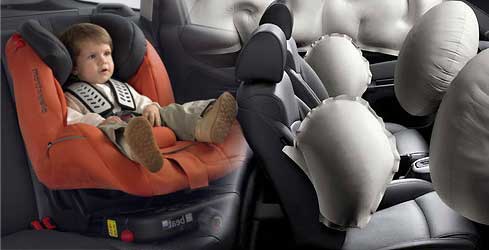
Fitting multiple car seats for children at once is an even bigger challenge, although this of course depends on how big the vehicle itself is. For example, in C-class cars (especially domestic ones), it will be quite uncomfortable for three children to sit even without child seats. For large family With 4-5 children, cars with seven seats arranged in three rows are suitable, or they will have to be transported in two cars. The most successful option for a large family is minivans.
Opinion on this security issue of Alexander Anatolyevich Ilyukhin from ExtrimDrive.
The ever-increasing number of car collisions even on city streets where maximum speed movement is limited, causing many to think about where the safest place is in the car. Such questions are especially of concern to parents transporting their children.
But many adult passengers, especially those who have been involved in minor (seemingly) accidents, try to take, let’s say, the safest position.
Unfortunately, on high-speed sections of roads, for example, on federal highways, the force of collisions is such that both the driver and passengers receive not only injuries incompatible with life, but even cars receive such damage that it is difficult to determine their model, and passengers have to remove from the passenger compartment using special equipment.
But let’s not exaggerate – in most collisions that occur on the streets, you can protect yourself, or rather, the passengers of your car, quite well.
All car models, starting from the late 90s, are already equipped with security systems in one way or another.
Car body
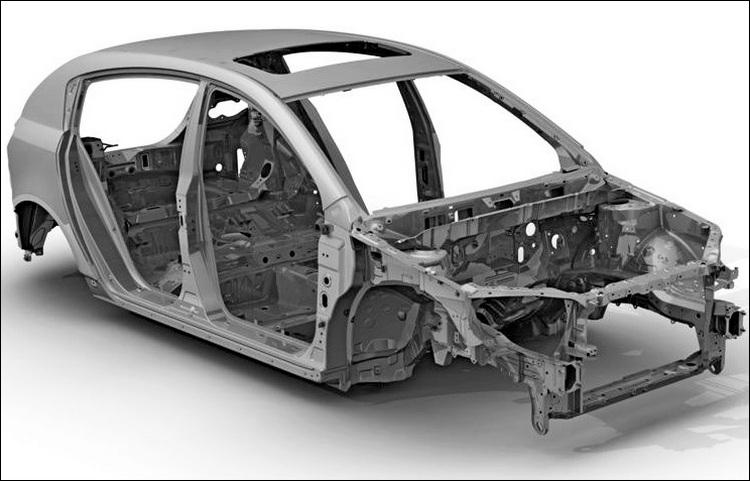
Power structure of the car body
When testing a new car model, crash tests are required, with a human dummy in the cabin.
The body of a passenger car is a load-bearing structure, that is, even its facing parts (door trims, hood, trunk lid, etc.) themselves already have a certain rigidity. Unfortunately, the thickness of the metal of the car body is such that, without reinforcements, it would have the strength and rigidity of a cardboard box.
Therefore, the body has reinforcements, with a greater thickness of metal.
In addition, the facing parts are also reinforced with metal profiles, pipes and similar elements. Bumper dampers have the greatest “impact resistance”, but, unfortunately, not on all cars.
When testing a new car model, crash tests are required, with a human dummy in the cabin. If a car does not meet certain requirements, it does not receive a certificate authorizing its production.
Despite this, the body of a regular passenger car, as a rule, is severely deformed during tangential and lateral impacts.
Although car designers are not giving up attempts to make car bodies safe for passengers in accidents. For example, when creating rigid body elements, leading manufacturers use the method of so-called programmed deformation - when a part upon impact is crushed so that it absorbs the energy of the collision, preventing it from spreading inside the passenger compartment.
Passenger airbags

Full set car airbags
The figure shows the interior of a car, maximally equipped with airbags for passengers.
Side airbags protect passengers from impacts with hard interior parts, including windows and roof pillars. However, the photo clearly demonstrates where they can be. On some cars, airbags are even sewn into the outer side surfaces of the seats to prevent hitting the doors during a side collision.
The driver's airbag is located under the pad in the steering wheel housing.
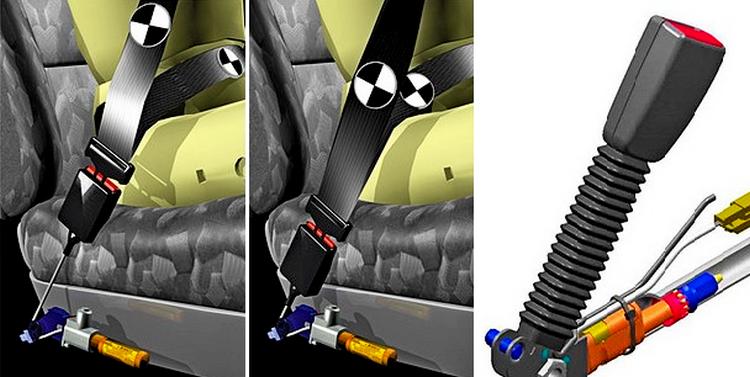
Car Seat Belt Retainer
Nowadays, on many cars with “expensive” equipment, a latch is installed to be activated using a squib.
The standard inertia design of the seat belt latch (tensioner) is too “slow”. There are real cases where, during a collision, a driver hit his head on the upper right corner of the windshield, earning himself a concussion.
Now, on many cars with “expensive” equipment, a clamp is installed that holds the lever to which the belt lock is attached, using a squib, the signal to which is supplied from a triggered shock sensor - similar to how airbags are triggered.
When braking sharply, the impact sensor transmits a signal to the seat belt squib, which instantly engages the seat belt lock.
This seat belt locking mechanism is similar to the activation of airbags in a car.
This design will not allow the passenger (or driver) to “fly out” of the seat, instantly pressing him to the back of the seat.
In any case, wearing a seat belt in many emergency situations saves the lives of many people.
What is the safest place in the car?
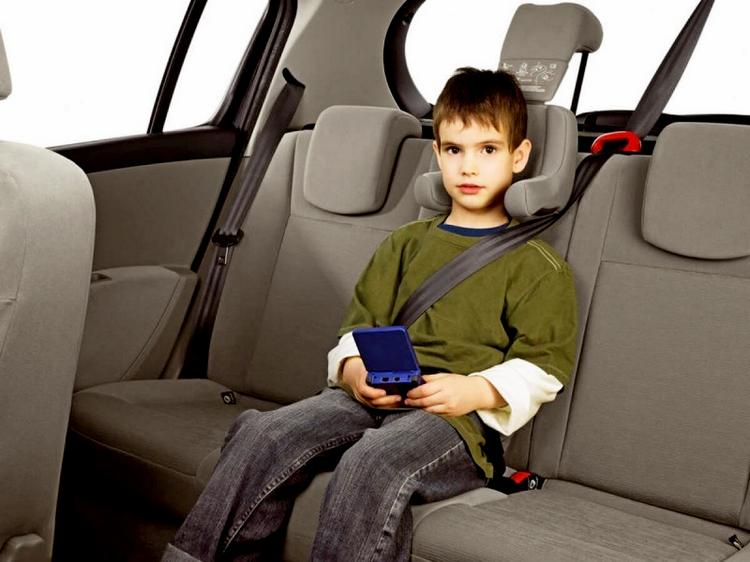
The most dangerous places In a car, you can count the seat next to the driver and behind him.
Children are the most defenseless people in a car. Therefore, the traffic police introduced new rules for transporting children in a car. And yet, despite the use of child seats or special restraints, about 26% of children suffer serious injuries, especially in side impacts. This happens due to the proximity of the child (especially his head) to solid objects.
The conclusion suggests itself: install Baby chair or other restraint device should be kept at a maximum distance from interior objects that could cause injury (windows, roof pillars, front seat backs).
That is, the safest place in the car for a child will be the middle seat in the back seat of the car. Moreover, if there are not enough standard belts to secure the chair, you should not try to lengthen them yourself - there are special devices for sale with reliable fastenings for such cases.
However, for an adult passenger, the safest place in the car will be the same. Do not forget about the presence of head restraints - to avoid a broken neck in the event of a rear impact.
The most dangerous places in a car can be considered the seat next to the driver and behind him.
In the first case, if there is a threat of an oncoming collision, the driver, moving away from danger, can completely instinctively “set up” the passenger.
In the second case - when entering a busy section of the road, when turning left, the driver may not calculate the speed of traffic flow and the car risks colliding with the rear left side of a car moving in a straight line.
If the driver violates the rules, passengers sitting on the right side of the car, both in the front and rear seats, may be harmed.
But the greatest guarantee of safety will still be provided by a trip with an attentive and calm driver who does not strive to be ahead of everyone.
When driving past serious accidents, planning to install a child car seat, or just sometimes thinking about life, many of us think about what is the safest place in the car.
Unfortunately, not much research has been carried out by scientists in this direction, so in various publications you can find different versions of the correct answer to the question that interests us. Let's try to figure them out together.
Diplomatic landing.
All officials, according to protocol, always occupy a seat in the car at the rear, diagonally from the driver. This is explained by the fact that with such a landing, in the event of a frontal impact, the passenger will not fly out through the windshield, and taking into account the fact that due to right-hand traffic in our country, most of the side impacts in road accidents occur on the left side (driver’s side), the likelihood of suffering from them is also minimized as much as possible. But during an accident, a car can spin out, then the impact will fall on this safest place, and then it will cease to be such.

Central location.
Based on the above arguments and research by Australian scientists, the central seat in the second row of seats was recognized in 2006 as the safest than any other: the risk of injury in an accident here is always 15 percent or more less, of course, provided that seat belts and/or a correctly secured child seat.
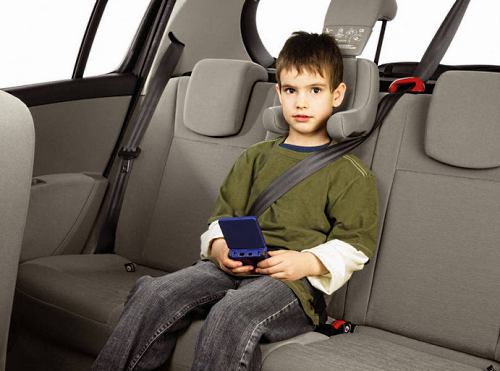
But that was back in 2006. Times change, so do technologies... and today the safest seat is no longer considered the rear center seat, but the seat next to the driver.
Front seat next to the driver.
Despite its vulnerability to impact, compared to the same central seat in the back row, the front passenger seat is the safest today. This fact is due to the introduction of various safety systems into the design of modern cars, including the installation of a large number of airbags, which, together with seat belts, play a decisive role for human health and life in an accident.
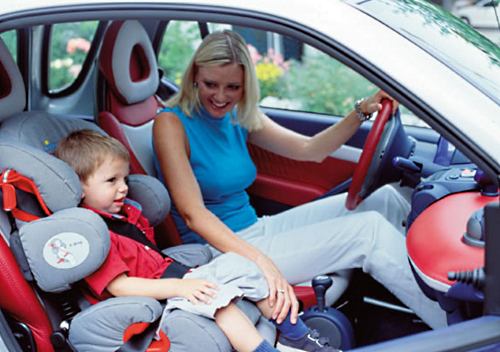
Where is the safest place in the car? Let's summarize.
So, the rear seat, located immediately behind the driver, is definitely the most dangerous: it is the one that accounts for the most side impacts and is the one that is most affected. hopeless situation drivers most often reflexively expose themselves to the blow, saving their own life. As for the remaining provisions, you should pay attention to the year of manufacture of the car and whether the central part of the rear row of seats is equipped with seat belts.
If such belts are present in the car and the vehicle itself is older than 10 years, then it will be safest to move in the central part of the rear sofa; if you are younger, choose a seat next to the driver. Well, if the car in question is not new for a long time, and the central place in the second row of seats does not have belts, you should drive such a car like a diplomat - from behind, diagonally from the driver.
Video.
Many people believe that it is best to sit behind the driver in a car, since during an accident his instinct kicks in - trying to save himself, the driver turns the steering wheel so as to avoid the impact as safely as possible. It turns out that the passenger sitting behind him will receive the least damage. Is it so?
In 2009, American scientists at the University of Buffalo examined accident data for 2003-2006 and came to the conclusion that rear seats are 80% safer than front seats. Moreover, the rear middle seat is generally 25% safer than the outer seats.
This is explained simply - the middle rear seat is protected from the rear by a trunk, on the sides it has the maximum distance from the doors, and in front, across the cabin, there is the engine compartment. Therefore, it has more space to protect against compression, and the centrifugal force acting on the passenger during rotation is less in this place. For maximum safety, a person should be wearing a seatbelt to avoid being thrown through the windshield in a collision. In addition, the seat must have a headrest, otherwise, during sudden braking, the passenger risks getting a spinal injury.
Various car models were tested in a wide variety of configurations (including), the influence of weather conditions and the age of drivers was taken into account, but even if all negative factors the middle rear seat remained at least 16% safer than the rest of the car.
This statement is further confirmed by the fact that most officials during trips sit behind the driver, diagonally from the driver, and are surrounded by accompanying persons.

This rule only applies to passenger cars standard configuration.
In cars with three rows of seats, the safest seat is in the middle of the center row.
Alternative points of view also have a right to exist. Thus, Russian experts claim that the safest place in a car is the passenger seat behind the driver, but Australian experts do not agree with this. In their opinion, during an accident, the person sitting in the front seat next to the driver is least likely to be injured. The fact is that last years car manufacturers pay special attention to the safety of this particular place - they provide additional airbags and modified belts, which significantly reduces the risk of serious injury in an accident.
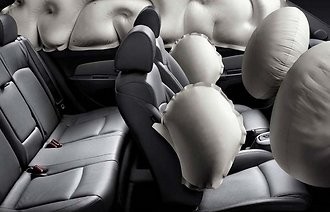
The last statement is true only for new car models. If we take into account cars produced before the mid-90s, then the back seat remains the safest in them.
Where is the best place to install a child seat?
The safety of children is the main concern of every parent. Where to install or to maximize the safety of small passengers?
It is best to secure the seat in the back seat in the middle and secure the child with a three-point seat belt. If in an accident the impact is to the side, the child will be as far as possible from the epicenter, but if the collision is head-on, then a blow to the back is excluded front seat. According to statistics, 26% severe injuries children receive in side crashes, 16% in frontal collisions and 16% in rollovers.
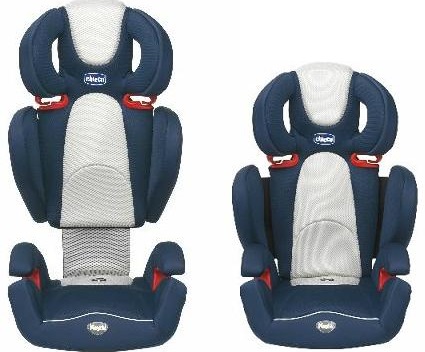
In addition to safety, installing a child seat in the center allows the parent sitting behind the wheel to see the child in the rearview mirror and when turning their head. Whereas it is extremely difficult to control a baby sitting behind the driver.
In the video you can hear the opinion of a specialist on this issue:




